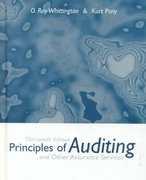Q3



Direct Materials, Direct Labor, and Overhead Variances, Journal Entries Rand Company produces dry fertilizer. At the beginning of the year, Rand had the following standard cost sheet: Overhead rates are computed using practical volume, which is 51,000 units. The actual results for the year are as follows: a. Units produced: 53,000 b. Direct materials purchased: 408,000 pounds at $1.32 per pound c. Direct materials used: 407,000 pounds d. Direct labor: 10,500 hours at $17.95 per hour e. Fixed overhead: $36,570 f. Variable overhead: $18,000 Required: 1. Compute price and usage variances for direct materials. MPV $ MUV $ 2. Compute the direct labor rate and labor efficiency variances. 2. Compute the direct labor rate and labor efficiency variances. Labor Rate Variance $ Labor Efficiency Variance $ 3. Compute the fixed overhead spending and volume variances. Spending Variance Volume Variance 4. Compute the variable overhead spending and efficiency variances. Spending Variance $ Efficiency Variance $ 5. Prepare journal entries for the following: a. The purchase of direct materials b. The issuance of direct materials to production (Work in Process) c. The addition of direct labor to Work in Process d. The addition of overhead to Work in Process e. The incurrence of actual overhead costs If an amount box does not require an entry, leave it blank. it blank. Second, recognize the overhead variances: Post amounts from highest to lowest. If an amount box does not require an entry, leave it blank. Third, close the overhead variances: Post amounts from highest to lowest. If an amount box does not require an entry, leave it blank. f. Prepare journal entries for the closing out of variances to Cost of Goods Sold. Post amounts from highest to lowest. If an amount box does not require an entry, leave it blank. First, close direct materials and direct labor variances: Second, recognize the overhead variances: Post amounts from highest to lowest. If an amount box does not require an entry, leave it blank. Required: 1. Compute price and usage variances for direct materials. MPV $ MUV $ 2. Compute the direct labor rate and labor efficiency variances. LaborRateVarianceLaborEfficiencyVariance$ 3. Compute the fixed overhead spending and volume variances. SpendingVarianceVolumeVariance$ 4. Compute the variable overhead spending and efficiency variances. Spending Variance $X Efficiency Variance Direct Materials, Direct Labor, and Overhead Variances, Journal Entries Rand Company produces dry fertilizer. At the beginning of the year, Rand had the following standard cost sheet: Overhead rates are computed using practical volume, which is 51,000 units. The actual results for the year are as follows: a. Units produced: 53,000 b. Direct materials purchased: 408,000 pounds at $1.32 per pound c. Direct materials used: 407,000 pounds d. Direct labor: 10,500 hours at $17.95 per hour e. Fixed overhead: $36,570 f. Variable overhead: $18,000 Required: 1. Compute price and usage variances for direct materials. MPV $ MUV $ 2. Compute the direct labor rate and labor efficiency variances. 2. Compute the direct labor rate and labor efficiency variances. Labor Rate Variance $ Labor Efficiency Variance $ 3. Compute the fixed overhead spending and volume variances. Spending Variance Volume Variance 4. Compute the variable overhead spending and efficiency variances. Spending Variance $ Efficiency Variance $ 5. Prepare journal entries for the following: a. The purchase of direct materials b. The issuance of direct materials to production (Work in Process) c. The addition of direct labor to Work in Process d. The addition of overhead to Work in Process e. The incurrence of actual overhead costs If an amount box does not require an entry, leave it blank. it blank. Second, recognize the overhead variances: Post amounts from highest to lowest. If an amount box does not require an entry, leave it blank. Third, close the overhead variances: Post amounts from highest to lowest. If an amount box does not require an entry, leave it blank. f. Prepare journal entries for the closing out of variances to Cost of Goods Sold. Post amounts from highest to lowest. If an amount box does not require an entry, leave it blank. First, close direct materials and direct labor variances: Second, recognize the overhead variances: Post amounts from highest to lowest. If an amount box does not require an entry, leave it blank. Required: 1. Compute price and usage variances for direct materials. MPV $ MUV $ 2. Compute the direct labor rate and labor efficiency variances. LaborRateVarianceLaborEfficiencyVariance$ 3. Compute the fixed overhead spending and volume variances. SpendingVarianceVolumeVariance$ 4. Compute the variable overhead spending and efficiency variances. Spending Variance $X Efficiency Variance









